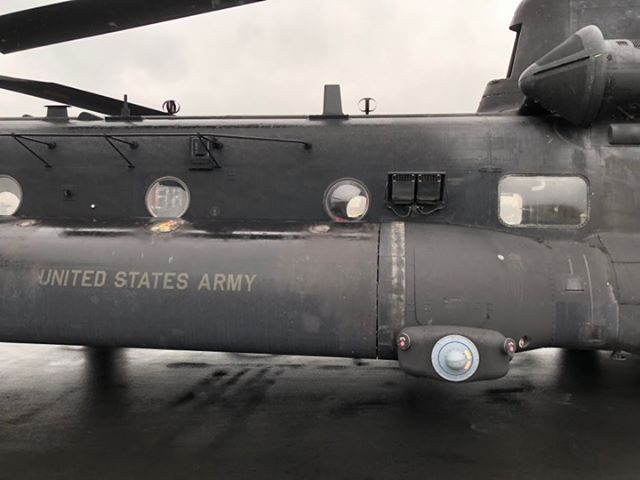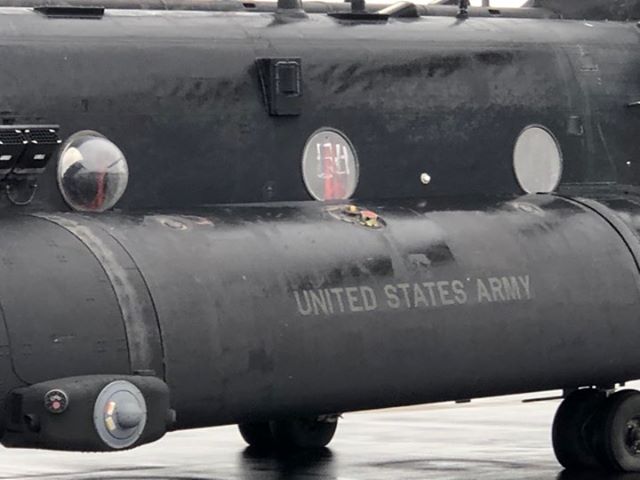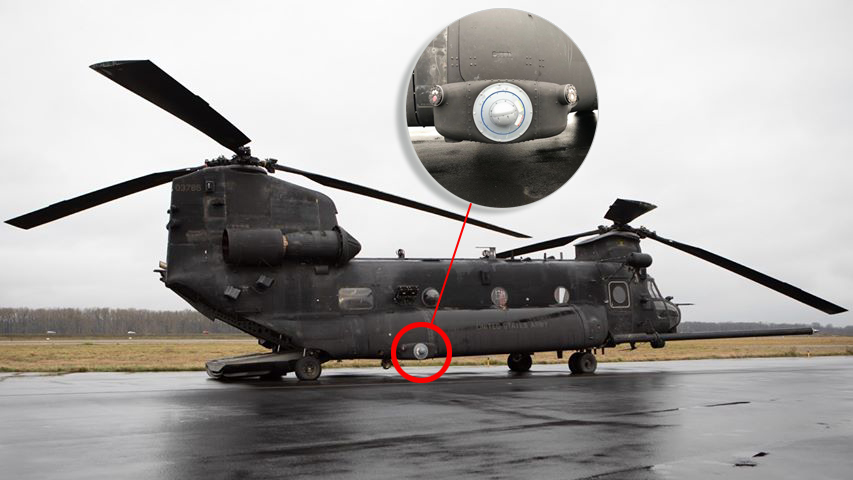The Chinooks of the “Night Stalkers” have received the new AN/AAQ-24 large aircraft infrared countermeasure (LAIRCM) system.
The photographs in this post were taken on Jan. 9, 2020, at Portland International Airport, by our friend Bill Shemley. They show one of the MH-47G Chinook helicopters used by the elite 160th SOAR (Special Operations Aviation Regiment) of the U.S. Army.
The 160th SOAR is a highly-specialized combat aviation unit headquartered at Ft. Campbell, Kentucky, that supports elite U.S. and coalition combat units like Army Special Forces, Naval Special Warfare (SEALs) and other special operations units. 160th SOAR mainly operate at night (hence their name) in attack, assault, reconnaissance, infiltration and exfiltration, and any kind of known or unknown special operations you may imagine. Indeed, the “Night Stalkers” are quite famous for the raid to capture Osama bin Laden, Operation Neptune’s Spear, on May 1, 2011. During that raid, the unit flew a classified, low-observable variant of the Blackhawk helicopter that has since been popularly referred to in speculation as the “MH-X Stealth Black Hawk” or “Silent Hawk”. Images of part of the secret helicopter were seen around the world when one of them crashed inside Bin Laden’s compound during the raid, leaving the tail section visible. Books and media accounts suggest only two of the aircraft were ever produced.
Anyway, the U.S. Army’s elite team fly MH-60L/M/K Black Hawks, A/MH-6M Little Birds and the MH-47Gs, heavily modified Chinooks with the peculiar refueling probe, large side sponsons and various sensors, including the new AN/AAQ-24 LAIRCM.
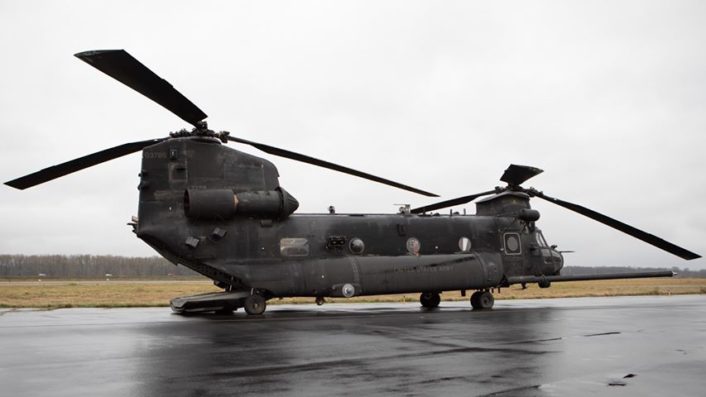
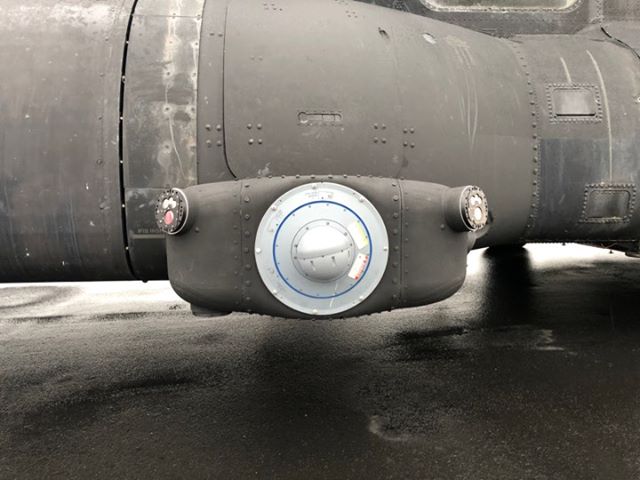
As Joseph Trevithik reported at The War Zone recently, the U.S. Army Special Operations Aviation Command, which oversees the 160th, posted a picture of an MH-47G on its Instagram page on Jan. 3, 2020. The caption did not say where or when the picture was taken, but the shot clearly showed the special operations helicopter with its new AN/AAQ-24 system. LAIRCM is a DIRCM (Directional Infrared Counter Measures) an acronym used to describe any infrared countermeasure system that tracks and directs energy towards heat seeking missiles.
Several helicopters have received these systems. We observed the first ones on the AH-64E Apaches deployed to Syria in 2017.
Here’s what this author wrote back then:
In order to perform their tasks, the attack helicopters operate at low altitude, well within the envelope of MANPADS (Man Portable Air Defense Systems) possibly in the hands of Daesh fighters. Shoulder-fired missiles have long been a concern in Syria, especially in the past years when MANPADS were occasionally used (also by Free Syrian Army militants to bring down Assad regime helicopters).
MANPADS in ISIS hands have made the Syrian battlefield more dangerous to low flying helos and aircraft as proved by the fact that U.S. and coalition aircraft have been targeted by man-portable systems while flying their missions over Syria in the past. For this reason, the U.S. Army Apaches have been equipped with what appears to be the Department of the Navy Large Aircraft Infrared Countermeasure (DON LAIRCM) system with the Advanced Threat Warning (ATW) upgrade.
The DON LAIRCM system, a variant of the U.S. Air Force LAIRCM system for fixed wing aircraft, is a defensive system designed to protect the asset against surface-to-air infrared missile threats. According to official documents, the system combines two-color infrared missile warning sensors with the Guardian Laser Transmitter Assembly (GLTA). The missile warning sensor detects an oncoming missile threat and sends the information to the processor, which then notifies the crew through the control interface unit and simultaneously directs the GLTA to slew to and begin jamming the threat.
The ATW capability upgrades the processor and missile warning sensors to provide improved missile detection, and adds hostile fire and laser warning capability with visual/audio alerts to the pilots.
The U.S. Navy plans to fully integrate the DON LAIRCM ATW system on the MV-22 and KC-130J with the mission system software whereas the Army plans to integrate AH-64, UH/HH-60, and CH-47 helicopters.
In his story at The War Zone, Trevithik says that it’s not clear how long the 160th has actually been using the AN/AAQ-24 on its MH-47Gs. However, he spotted at least one other set of pictures, dated January 2019, showing one of the special operations Chinooks equipped with this DIRCM system. Noteworthy, it’s not even clear whether the AN/AAQ-24 installed on the MH-47G is the same developed for the “regular” CH-47F that experienced poor performance because of incorrect Advanced Threat Warner during flight testing in 2017, Trevithik noted.
Bill Shemley had the opportunity to shoot some great close up photographs of the Night Stalkers’ Chinook as it flew from Ft. Campbell to Gray AAF, Washington State.
